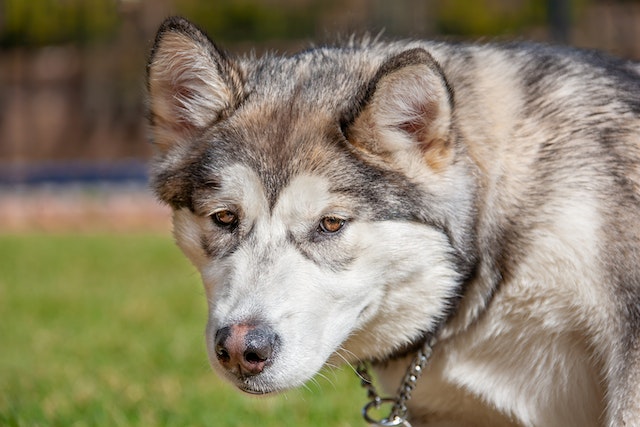9 Stroke Symptoms For Dogs You Might Notice
Just like humans, dogs can also suffer from a stroke, which is a serious and potentially life-threatening condition.
A stroke occurs when the blood flow to a part of the brain is disrupted, leading to damage of brain tissue.
As a result, the affected area of the brain may no longer function properly, which can cause a range of symptoms that vary in severity.
In dogs, the symptoms of a stroke can be difficult to recognize, as they may not be able to communicate their symptoms to their owners.
However, there are some common signs to watch out for, and early recognition of stroke symptoms can be critical in providing your dog with prompt medical attention and improving their chances of recovery.
Here are 9 common stroke symptoms that dogs may experience:
1. Head tilt:
A sudden head tilt is a common symptom of stroke in dogs.
If your dog is experiencing a stroke, they may tilt their head to one side or the other, and this head tilt may persist even when the dog is walking or standing still.
The head tilt is often accompanied by other symptoms, such as loss of balance, disorientation, and changes in behavior.
However, it's important to note that not all head tilts are caused by strokes, and there can be other medical conditions or issues that may cause a head tilt in dogs.
If you notice your dog tilting their head, it's important to consult with a veterinarian to determine the underlying cause and appropriate treatment.
2. Loss of balance:
Loss of balance is another common symptom of stroke in dogs. If your dog is experiencing a stroke, they may have difficulty standing or walking, and may appear unsteady on their feet.
They may also walk in circles or lean to one side. Loss of balance may be accompanied by other symptoms, such as a head tilt, disorientation, and changes in behavior.
It's important to note that loss of balance can also be caused by other medical conditions, such as inner ear infections, vestibular disease, or brain tumors.
Therefore, if you notice that your dog is experiencing a loss of balance, it's important to consult with a veterinarian to determine the underlying cause and appropriate treatment.
The veterinarian may perform a physical examination, blood tests, or imaging tests such as an MRI or CT scan to help diagnose the cause of your dog's loss of balance.
Early detection and treatment of a stroke or other medical conditions can improve your dog's chances of recovery.
Read: Great Dane Price
3. Weakness or paralysis:
Weakness or paralysis is another common symptom of stroke in dogs. If your dog is experiencing a stroke, they may suddenly appear weak or unable to move one or more limbs.
This weakness or paralysis may affect one side of the body or be more widespread, depending on the location and severity of the stroke.
Weakness or paralysis may be accompanied by other symptoms, such as loss of balance, changes in behavior, and disorientation.
It's important to note that weakness or paralysis can also be caused by other medical conditions, such as spinal cord injuries, nerve damage, or degenerative myelopathy.
Therefore, if you notice that your dog is experiencing weakness or paralysis, it's important to consult with a veterinarian to determine the underlying cause and appropriate treatment.
The veterinarian may perform a physical examination, blood tests, or imaging tests to help diagnose the cause of your dog's weakness or paralysis.
Early detection and treatment of a stroke or other medical conditions can improve your dog's chances of recovery.
Read: Beagle Dog Price
4. Changes in vision:
Changes in vision can be a symptom of stroke in dogs. If your dog is experiencing a stroke, they may have trouble seeing or become blind.
This is often due to damage to the part of the brain that processes visual information.
Changes in vision may be accompanied by other symptoms, such as head tilt, loss of balance, and disorientation.
It's important to note that changes in vision can also be caused by other medical conditions, such as cataracts, glaucoma, or other eye diseases.
Therefore, if you notice that your dog is experiencing changes in vision, it's important to consult with a veterinarian to determine the underlying cause and appropriate treatment.
The veterinarian may perform an eye exam or refer your dog to a veterinary ophthalmologist for further evaluation.
Early detection and treatment of a stroke or other medical conditions can improve your dog's chances of recovery and prevent further vision loss.
Read: Vodafone Dog Price
5. Loss of appetite:
Loss of appetite is a possible symptom of stroke in dogs.
If your dog is experiencing a stroke, they may become disinterested in food or stop eating altogether. This can be due to a loss of appetite or difficulty in swallowing.
Loss of appetite may be accompanied by other symptoms, such as changes in behavior, lethargy, and disorientation.
It's important to note that loss of appetite can also be caused by other medical conditions, such as dental disease, gastrointestinal problems, or liver or kidney disease.
Therefore, if you notice that your dog is experiencing loss of appetite, it's important to consult with a veterinarian to determine the underlying cause and appropriate treatment.
The veterinarian may perform a physical examination, blood tests, or imaging tests to help diagnose the cause of your dog's loss of appetite.
Early detection and treatment of a stroke or other medical conditions can improve your dog's chances of recovery and ensure they receive the appropriate nutrition and care.
Read: German Shepherd Price
6. Abnormal behavior:
Abnormal behavior is another possible symptom of stroke in dogs.
If your dog is experiencing a stroke, they may exhibit sudden changes in behavior, such as becoming aggressive, confused, or restless.
They may also appear disoriented and may not recognize their surroundings or people they know well.
Abnormal behavior may be accompanied by other symptoms, such as loss of balance, weakness or paralysis, and changes in vision.
It's important to note that abnormal behavior can also be caused by other medical conditions, such as neurological disorders, pain, or anxiety.
Therefore, if you notice that your dog is exhibiting abnormal behavior, it's important to consult with a veterinarian to determine the underlying cause and appropriate treatment.
The veterinarian may perform a physical examination, blood tests, or imaging tests to help diagnose the cause of your dog's abnormal behavior.
Early detection and treatment of a stroke or other medical conditions can improve your dog's chances of recovery and ensure they receive the appropriate care and support.
7. Seizures:
Seizures can be a symptom of stroke in dogs, although they are less common than some of the other symptoms previously mentioned.
If your dog is experiencing a stroke, they may have a seizure, which is an abnormal electrical activity in the brain that can cause convulsions, shaking, and loss of consciousness.
Seizures may be accompanied by other symptoms, such as weakness or paralysis, loss of balance, and changes in behavior.
It's important to note that seizures can also be caused by other medical conditions, such as epilepsy, brain tumors, or liver or kidney disease.
Therefore, if you notice that your dog is experiencing seizures, it's important to consult with a veterinarian to determine the underlying cause and appropriate treatment.
The veterinarian may perform a physical examination, blood tests, or imaging tests to help diagnose the cause of your dog's seizures.
Early detection and treatment of a stroke or other medical conditions can improve your dog's chances of recovery and prevent further seizures.
Read: Maltipoo Dog Price
8. Inability to respond:
Inability to respond is another possible symptom of stroke in dogs. If your dog is experiencing a stroke, they may be unresponsive to commands, their name, or other stimuli.
This can be due to damage to the part of the brain that controls awareness and responsiveness.
Inability to respond may be accompanied by other symptoms, such as weakness or paralysis, loss of balance, and changes in behavior.
It's important to note that inability to respond can also be caused by other medical conditions, such as head trauma, drug toxicity, or severe infections.
Therefore, if you notice that your dog is unresponsive, it's important to seek immediate veterinary attention to determine the underlying cause and appropriate treatment.
The veterinarian may perform a physical examination, blood tests, or imaging tests to help diagnose the cause of your dog's inability to respond.
Early detection and treatment of a stroke or other medical conditions can improve your dog's chances of recovery and prevent further brain damage.






.jpg)


.jpg)



